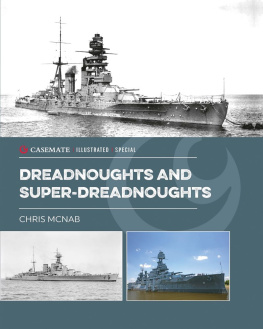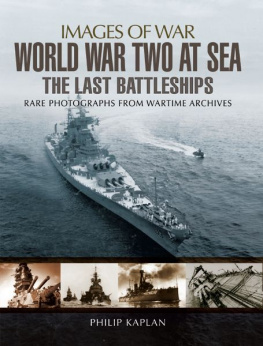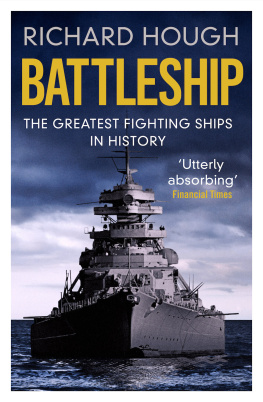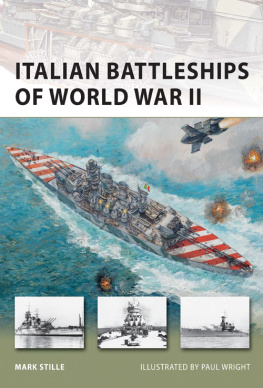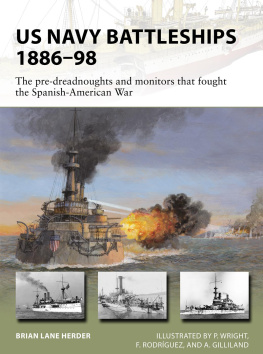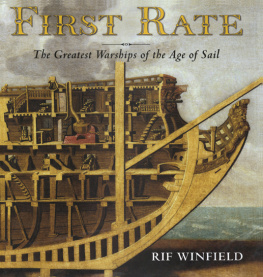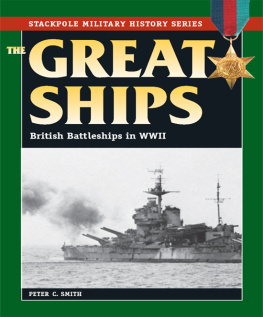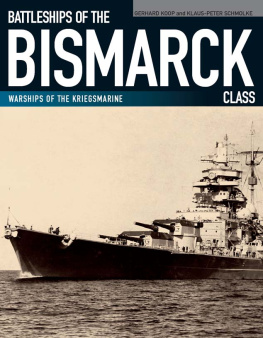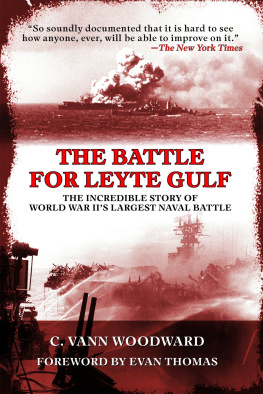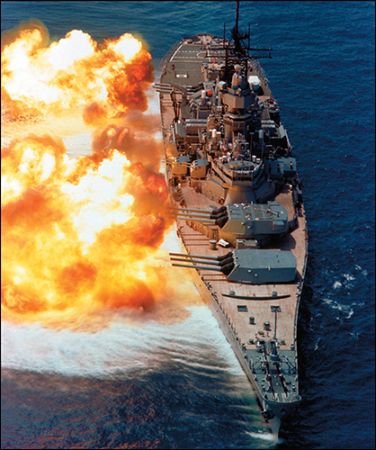THE WORLDS
GREATEST
BATTLESHIPS
DAVID ROSS

This digital edition first published in 2015
Published by
Amber Books Ltd
7477 White Lion Street
London N1 9PF
United Kingdom
Website: www.amberbooks.co.uk
Appstore: itunes.com/apps/amberbooksltd
Facebook: www.facebook.com/amberbooks
Twitter:
Copyright 2015 Amber Books Ltd
ISBN: 978-1-78274-111-4
All rights reserved. With the exception of quoting brief passages for the purpose of review no part of this publication may be reproduced without prior written permission from the publisher.
The information in this book is true and complete to the best of our knowledge.
All recommendations are made without any guarantee on the part of the author or publisher, who also disclaim any liability incurred in connection with the use of this data or specific details.
Picture Credits:
AKG: 41 (Oronoz)
Alamy: 24 (MEPL), 25 (MEPL), 77 (19th Era), 81 (World History Archive)
Amber Books: 142, 143, 171
Art Archive: 28
Art-Tech/Aerospace: 61, 166, 186, 187, 194, 198, 202, 219
Cody Images: 56, 57, 65, 118 bottom, 122, 123, 131, 134, 135, 151, 154, 155, 158, 170, 174, 175, 178, 183, 190, 195, 203, 207, 210, 218
Corbis: 37 & 44 (Gallery Collection), 69 (Lebrecht Music & Arts)
Dreamstime: 20 (Martin Maun), 33 (Michael Wood)
Mary Evans Picture Library: 17, 101, 114
Getty Images: 52 (Hulton)
Library of Congress: 8, 88, 89, 95, 96, 97, 104, 110, 126, 127, 139
U.S. Department of Defense: 6, 7, 85 both, 106, 211, 215
All artworks Tony Gibbons/Amber Books, except for the following: Art-Tech: 10/11, 12, 13, 14/15, 18/19, 22/23, 26/27, 30, 31, 34/35, 45, 46/47, 50/51, 62/63, 111, 128/129, 160/161, 180/181, 184/185, 206

www.amberbooks.co.uk
Contents
Introduction
For more than 400 years, the big-gun warship stood as the supreme achievement of naval architecture and ship equipment. It was not only a major instrument of warfare, but a visible emblem of a nations power, wealth and pride. Possession of a powerful fleet had a major influence on a countrys foreign policy.
The first capital ships were intended as flagships conspicuous by their size, flying the banner of an admiral, and acting as lead vessel to a squadron or fleet of smaller craft. By the end of the sixteenth century, their value as fighting machines encouraged the maritime countries of Europe to build more big warships, and also led to a change in the tactics of war at sea. The concept of the line of battle gradually became dominant, in which two fleets formed up in line to bombard each other. Such encounters were always more than a simple slugging match: the advantage would rest with the admiral who kept the wind in his favour and could place his ships in a position to do maximum damage. A line-of-battle ship, or ship of the line, had to be big and broad enough to carry heavy cannon and act as a steady firing platform, and strong enough to withstand reciprocal fire. These remained the two fundamental requirements even after wooden hulls gave way to iron and steel, sails were supplanted by steam power, and cannonballs were replaced by armour-piercing or high-explosive shells. Eventually the name was shortened to battleship, though the term did not come into common use until the nineteenth century.
Commissioned in 1912, USS Arkansas served in both world wars, including providing fire support for the amphibious assaults of Normandy, Iwo Jima and Okinawa.
Developments in the making of armour plate and in the design of guns strongly influenced battleship construction in the nineteenth century, with progress in one field forcing new attention to the other. Many one-off ships were launched, some of them to have brief careers. For a time, the fashioning of the torpedo into an effective weapon looked as if it might bring the age of the battleship to a premature end. But by the early 1900s, innovations and improvements established the combination of internal armoured decks and bulkheads, big guns mounted on the centre-line, with super-firing turrets, and turbine propulsion, which would become standard in the twentieth century, and culminate in such mighty warships of World War II as Germanys Bismarck, the USAs Iowa and Japans Yamato.
USS Iowa demonstrates the power of its 406mm (16in) guns. Commissioned in 1943, Iowa served in the US Navy until 1990.
Advent of the battlecruiser
Also in the 1900s, a variant on the capital ship appeared in the form of what quickly became known as the battlecruiser, built by several navies, notably the British, German and Japanese. The US Navy built three large cruisers in 194345, classified as CB rather than BB for battleship. In effect the battlecruiser was a battleship in which, to a degree, weight of armour was exchanged for increased speed. While some purists might argue that the battlecruiser is a separate category of warship, a few have been included in this book. Since they took part in combat with battleships, and in most cases were bigger, more expensive and often carried heavier guns, than many battleships, this seems reasonable.
In any naval strategy up to 1942, battleships were the prime elements. Yet they fought relatively few full-scale battles. At Tsushima in 1905 the Japanese battle fleet destroyed that of Imperial Russia. In 191418, the admiral commanding the British Grand Fleet was known as the only man who could lose the war in a day, if the Kaisers High Seas Fleet were to wrest control of the North Sea from the Royal Navy. The two fleets met only once, in the inconclusive Battle of Jutland in May 1916. In World War II, battleships were frequently in action, though generally in escort roles or as supporting units in large-scale operations involving many other ships and aircraft.
Battleship building boom
Many hundreds of men-of-war were built up to the end of the nineteenth century. Between 1905, the year before the revolutionary HMS Dreadnought appeared, and 1946, when HMS Vanguard became the last new battleship to be commissioned, some 220 capital ships were put in commission by the worlds naval powers (not all of them, of course, in service at the same time). Great Britain built the largest number, with around 52, the USA had 41, Germany had 40, Japan and France each had 20, Italy had 19, Russia 13, Austria-Hungary had seven, and Argentina, Brazil and Chile each had two. Many more were planned or begun but not completed, due to wars coming to an end, or international treaty agreements, or simply lack of resources. They were hugely expensive. The battlecruiser HMS Hood cost 6,025,000 to build in 191620, and 400,000 a year to run.
This book sets out to provide, through major entries on 52 ships, a guide to the worlds great capital ships. Some of them had eventful careers and participated in famous actions, others are remembered only for being sunk. So powerful was the link between the battleship and national feeling that even into the nuclear era, some, like Frances Richelieu, were held in naval reserve. As late as 196768 USS






